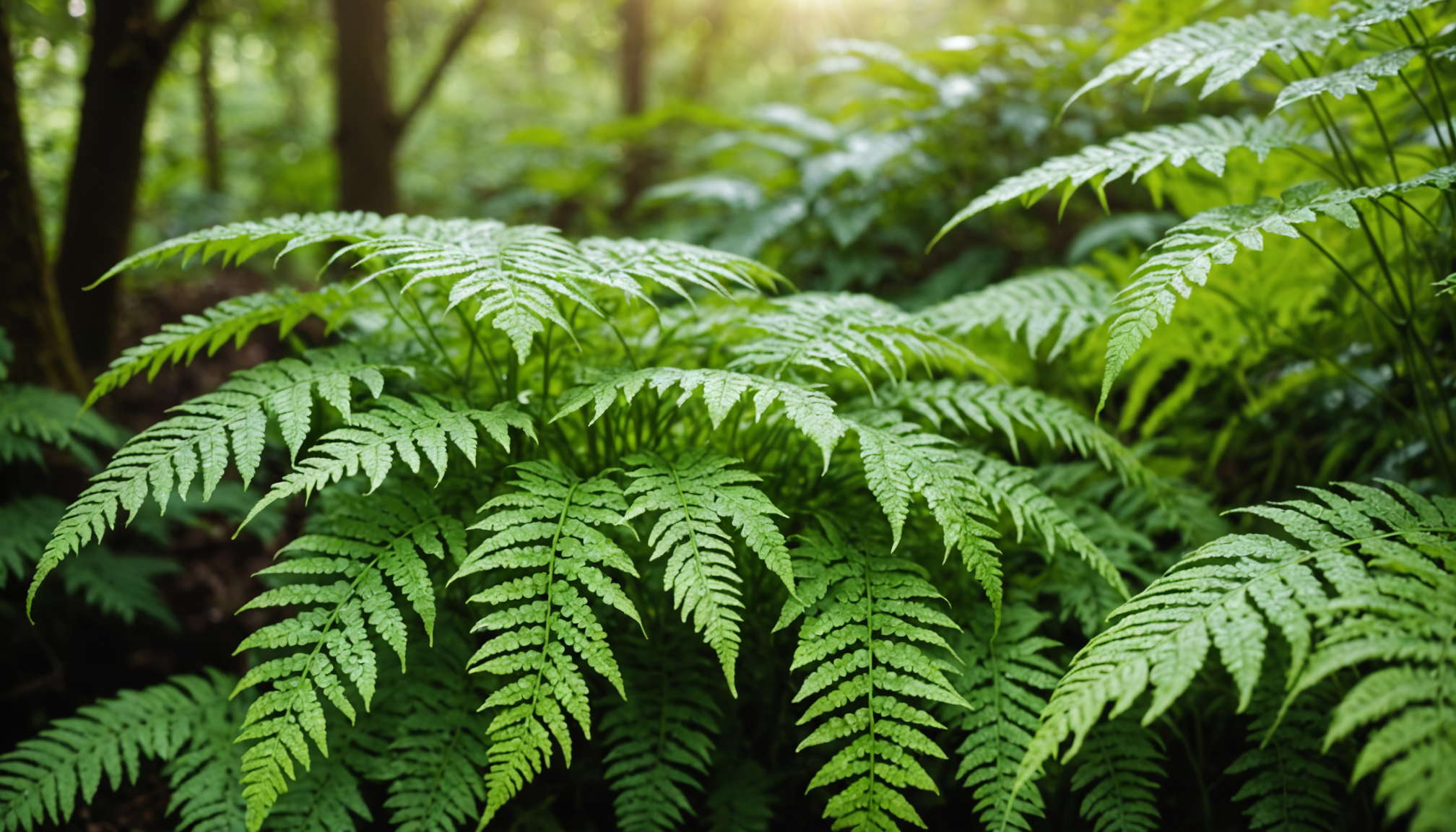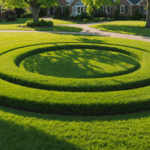When it comes to maintaining a healthy and thriving garden, understanding your plants’ specific watering needs is crucial. Different plants have varying requirements based on their species, stage of growth, and environmental conditions. By tailoring your garden watering practices to meet these individual needs, you can significantly enhance plant health and vitality.
The first step in determining your plant’s watering needs is identifying the type of plants in your garden. Some plants, such as succulents and cacti, are adapted to arid conditions and require minimal water, while others, like ferns and tropical plants, thrive in moist environments. Understanding these basic requirements will serve as the foundation for your garden watering strategy.
Consider the growth stage of your plants. Newly planted seedlings and transplants typically need more frequent watering as they establish their root systems. Once established, mature plants generally need less frequent irrigation. Pay close attention to the growth habits of your plants; this can guide you in scheduling water sessions more effectively.
Environmental factors, including temperature, humidity, and weather conditions, also greatly influence plant hydration needs. During hot, dry spells, plants may require more frequent watering compared to cooler, more humid periods. Additionally, take into account local rainfall patterns which can naturally supplement your watering efforts.
- Light: Plants in full sun will dry out faster and need more water compared to those in shaded spots.
- Wind: Exposure to wind increases evaporation rates, leading to greater water loss.
- Proximity to heat sources: Plants near heat radiators or pathways may need increased watering.
To help you assess and tailor your irrigation tips effectively, you can employ tools like soil moisture meters. These devices provide real-time data on soil moisture levels, allowing you to determine whether your garden needs immediate watering or can wait for natural precipitation.
The following table provides a quick comparison of general water requirements for common garden plants:
| Plant Type | Watering Frequency | Additional Tips |
| Succulents | Every 2-3 weeks | Ensure soil dries out completely between waterings |
| Tropical Plants | Twice a week | Maintain high humidity levels |
| Vegetables | 1-2 inches per week | Use mulch to retain moisture |
Understanding and assessing the specific watering needs of your plants is pivotal to cultivating a lush garden. By considering factors such as plant type, growth stage, and environmental influences, you can tailor your watering schedule to boost plant health and ensure an ever-flourishing garden. Always remember that effective irrigation tips will save water and resources while promoting sustainable gardening practices.
signs of overwatering
Overwatering is a common issue that can have detrimental effects on plant health, leading to wilting, yellowing leaves, and even the demise of your beloved plants. Recognizing the signs of overwatering promptly can help you rectify the issue and restore balance to your garden watering regimen. Here’s a step-by-step guide to identifying and addressing overwatering:
1. Check for Wilting Leaves:
– While wilting usually indicates lack of water, it can paradoxically be a sign of overwatering. Examine the texture of the leaves. Overwatered plants tend to have soft, limp leaves that appear soggy, in contrast to the crisp, dry appearance of underwatered plants.
2. Inspect Leaf Color:
– Look for yellowing leaves, particularly if the discoloration begins on the lower parts of the plant before spreading upwards. This can signal that the roots are waterlogged, hindering nutrient absorption.
3. Feel the Soil:
– Use your finger or a soil probe to check moisture levels. If the soil is consistently damp and lacks aeration, you might be dealing with overwatering. Ideally, soil should be moist but still allow for sufficient oxygen circulation to the roots.
4. Observe Plant Growth Patterns:
– Stunted growth is a common symptom of plants receiving too much water. If your plants aren’t flourishing and developing new growth as expected, examine your watering habits.
5. Examine Root Condition:
– If feasible, gently remove the plant from its pot to inspect the roots. Healthy roots are typically white and firm. In contrast, dark-brown, mushy roots suggest root rot, a direct consequence of excess water.
6. Check for Fungal Growth:
– Overwatered soil can become a breeding ground for fungi and mold. Keep an eye out for fuzzy white growth on the soil or around the base of the plant, as this indicates excessive moisture levels.
7. Monitor the Surrounding Environment:
– Investigate the soil for signs of poor drainage, such as water pooling or slow-draining soil. Assess if containers have adequate drainage holes and if garden beds allow excess water to percolate through efficiently.
8. Smell the Soil:
– An unpleasant, musty odor emanating from the soil is often a clear indicator of overwatering and potential root decay.
Addressing overwatering involves adjusting your irrigation tips and practices:
– Reduce Watering Frequency: Modify your schedule to allow the soil to dry slightly between waterings, reducing frequency based on the established needs of each plant.
– Improve Drainage: Ensure that plants, whether in containers or gardens, have adequate drainage. This might involve adding gravel to the bottom of pots, using raised beds, or amending garden soil with sand or organic matter to enhance drainage.
– Use Watering Tools Wisely: Leverage tools like moisture meters to accurately gauge when your plants truly need water, avoiding reliance solely on visual assessment.
By implementing these strategies, you can effectively reverse the negative impacts of overwatering, promoting healthier plant growth and more effective garden watering approaches. Through careful observation and timely adjustments, your plants will thrive while conserving water and ensuring sustainable gardening practices.
the role of soil and drainage
The unseen interplay between soil and drainage plays a pivotal role in orchestrating the overall health of your garden. Understanding how these factors impact garden watering can help you optimize plant health and maximize efficient water use. The soil acts as both the medium for plant roots and a reservoir for water, influencing how well plants can access and utilize moisture.
Soil Type Matters: One of the key aspects to consider is the type of soil in your garden. Sandy soils, for instance, are known for their fast-draining properties, often causing water to seep away before plants can fully absorb it. While they minimize the risk of overwatering, they demand more frequent irrigation tips to maintain adequate moisture levels. Conversely, clay soils retain water longer, posing a greater risk of overwatering and root suffocation. A balanced loam soil, rich in organic matter, provides an ideal equilibrium, offering both good drainage and moisture retention.
Incorporating organic amendments like compost can significantly enhance soil structure, improving both water retention in sandy soils and drainage in clay-heavy grounds. Such amendments also contribute to the soil’s nutrient profile, further favoring plant health.
Drainage Essentials: Proper drainage is indispensable in averting issues related to both waterlogging and nutrient leaching. Inadequate drainage indicates water stagnation, leading to root rot and poor oxygen availability to plant roots. To ensure effective drainage, elevate garden beds or utilize raised planters to facilitate downward water movement. For container plants, verify that pots have sufficient drainage holes to allow excess water to escape, preventing accumulation at the base.
When establishing a garden, consider implementing scales, such as gentle slopes, that direct excess water away, preventing pooling around plant bases. This ensures that water is distributed evenly, supporting a healthy garden ecosystem.
Companion Planting and Mulching: Another beneficial practice is mulch application. Mulch serves both as a barrier to moisture evaporation and as a protective layer that shields soil from harsh weather conditions, thereby maintaining consistent soil temperatures. Organic mulches, like wood chips and straw, gradually decompose, further enhancing soil quality and its moisture-retentive capacity. This not only aids in conserving water but also in reducing the frequency of garden watering.
Customized Irrigation Approaches: Tailoring your irrigation practices to the specific soil and drainage conditions of your garden can minimize water wastage and promote sustainability. Drip irrigation systems and soaker hoses represent particularly effective methods, delivering water directly to the soil, where it’s needed most, with minimal evaporation loss. These systems can be fine-tuned to respond to varying soil types and drainage capacities, aligning with each plant’s hydration needs without overwhelming them.
By thoroughly understanding the interaction between soil characteristics and drainage in your garden, you can establish a robust foundation for plant health. Optimizing these factors not only bolsters water conservation efforts but also enhances the effectiveness of your irrigation tips, securing a resilient and thriving garden.
seasonal watering tips
When it comes to adjusting your garden watering regimen throughout the year, keeping seasonal changes in mind is crucial. Every season brings its own set of challenges and opportunities, demanding a nuanced approach to maintain plant health and optimize irrigation tips effectively.
In the spring, temperatures begin to rise, prompting new plant growth. This is a time when many plants emerge from dormancy and require a moderate increase in watering to support their developing roots and new foliage. However, it’s essential to balance this with the natural moisture from spring rainfalls. Waiting to water until the topsoil starts drying out can prevent overwatering and water waste.
As summer arrives, the combination of increased temperatures and longer daylight hours intensifies the evaporation rate, which can quickly dry out soil and stress plants. During this period, watering deeply but less frequently can be beneficial. The goal is to encourage deeper root systems that better withstand the heat. Early morning is the ideal time for watering, reducing evaporation and ensuring that plants have ample moisture throughout the hottest part of the day. For plants in containers or those prone to heat stress, you might need to adjust the frequency based on their specific demands.
In the fall, as temperatures start to drop, watering needs tend to decrease. Nonetheless, it’s important to keep an eye on rainfall patterns and adjust accordingly. Fall is also an excellent time to prepare your garden for the harshness of winter by ensuring that perennials and shrubs enter dormancy well-watered, reducing stress and potential dieback. Mulching now can help retain soil moisture and stabilize temperature fluctuations as colder weather looms.
Winter poses a unique set of challenges, especially in regions where the ground freezes. During this season, active watering often becomes unnecessary or even detrimental due to the reduced water uptake by dormant plants. In areas with milder winters, occasionally check soil moisture and water only if the top few inches have dried out, especially during prolonged dry spells. Protecting plants with frost blankets or coverings can help them retain moisture during cold snaps without the need for additional water.
Incorporating seasonally adjusted irrigation tips into your garden care routine not only conserves water but ensures that each plant receives what it needs throughout its growth cycle. By being attentive to seasonal shifts and responsive to their effects on soil moisture and plant health, you’ll cultivate a garden that flourishes year-round.
tools for efficient watering
Achieving an efficient watering strategy can significantly enhance both plant health and water conservation in your garden. To streamline your garden watering practices, investing in the right tools is crucial. Drip irrigation systems, for instance, deliver water directly to the base of plants, minimizing waste and ensuring that moisture reaches the roots effectively. These systems are not only water-efficient but also versatile, allowing you to adjust the flow and timing to meet the specific needs of different plant species and garden areas.
Soaker hoses are another excellent tool for efficient irrigation. They work by providing a slow, steady release of water along their length, ensuring even distribution across the soil. This method reduces surface runoff and evaporation, particularly in larger garden beds where uniform moisture levels are critical.
Smart irrigation controllers offer a tech-savvy solution for modern gardeners, enabling automated watering schedules that account for weather conditions and soil moisture levels. With features like remote operation and soil sensors, these devices help optimize water usage based on real-time data, adapting irrigation tips to changing environmental factors.
For those who prefer manual watering, tools like watering wands and adjustable nozzle sprayers provide greater control over water distribution, making it easier to target specific plants without overwatering adjacent areas. Using rain gauges to monitor local precipitation can also aid in adjusting your manual watering schedule, integrating natural rainwater into your routine to reduce dependency on artificial watering systems.
Incorporating these tools into your garden maintenance can enhance plant health by delivering water precisely where and when it’s needed, preventing both drought stress and overwatering-related issues. These efficient strategies not only conserve vital water resources but also support sustainable gardening practices, ensuring your garden thrives with minimal environmental impact.
In conclusion, understanding and adapting to the various aspects of garden watering—such as plant needs, signs of overwatering, soil and drainage dynamics, seasonal variations, and the use of efficient tools—enables you to create an environment in which your plants can flourish. By observing your garden’s unique conditions and making informed adjustments, you can promote healthy plant growth and sustainable water usage, resulting in a thriving garden year-round.











